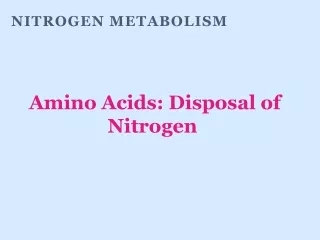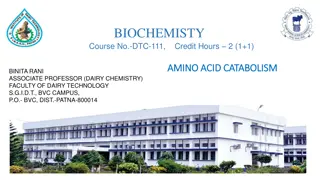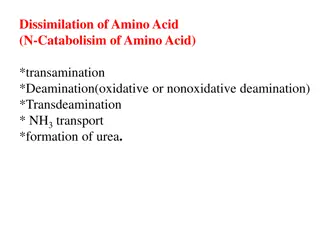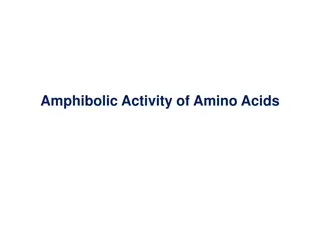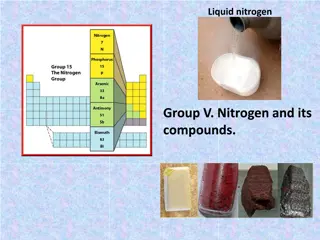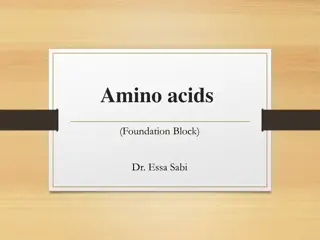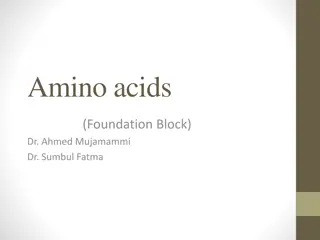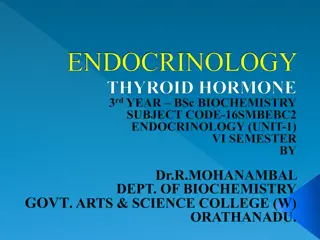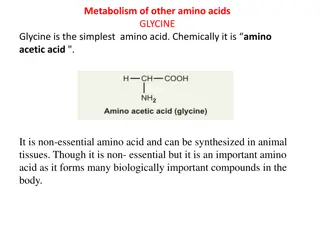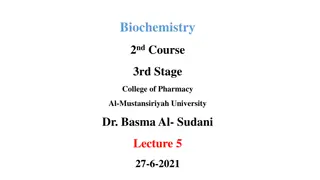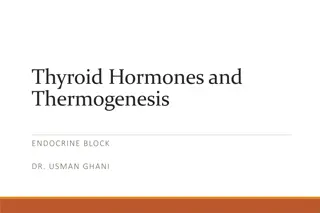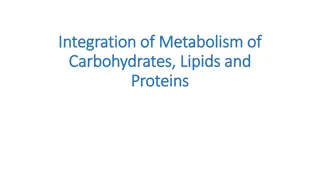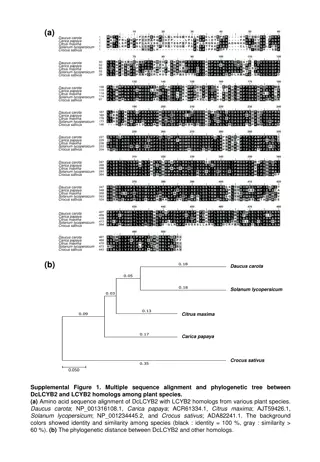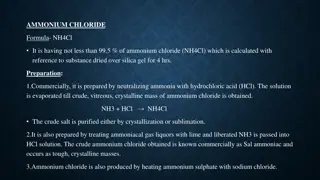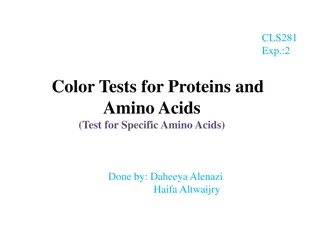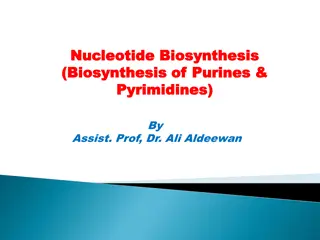Understanding Nitrogen Metabolism: Amino Acid Biosynthesis and Ammonia Incorporation
Nitrogen metabolism is crucial in the biosynthesis of amino acids such as glutamate and glutamine, incorporating ammonia for various physiological processes. Ammonia is efficiently transported and stored using compounds like alanine and glutamate, playing a key role in the urea cycle. Glutamate, a vital component for protein synthesis and a major neurotransmitter, is naturally produced by the body and found in various food sources. Glutamine, essential for nitrogen transport, is predominantly synthesized by muscle tissue and consumed by cells with high metabolic activity like those in the intestine, immune system, kidneys, and even cancer cells. Understanding these processes sheds light on the importance of nitrogen metabolism in overall health.
Download Presentation

Please find below an Image/Link to download the presentation.
The content on the website is provided AS IS for your information and personal use only. It may not be sold, licensed, or shared on other websites without obtaining consent from the author. Download presentation by click this link. If you encounter any issues during the download, it is possible that the publisher has removed the file from their server.
E N D
Presentation Transcript
BIOCHEMISTRY II Topic: Nitrogen Metabolism: Biosynthesis of any one amino acid from the family; incorporation of ammonia in glutamate and glutamine.
Introduction of ammonia Ammonia is constantly liberated in the metabolism of amino acids and other nitrogenous compounds. At physiological pH, ammonia exits as NH4+.
Transport and storage of ammonia Alanine is important for ammonia transport from muscle to liver by Glucose-Alanine cycle.
Transport and storage of ammonia Body has an efficient mechanism for ammonia transport and its utilization for urea cycle. The transport of ammonia between various tissues and the liver mostly occurs in the form of glutamate or alanine and not as free ammonia.
Introduction of glutamate Also known as Glutamic acid. Taken up by body in order to build proteins. Most abundant stimulating neurotransmitter in the nervous system.
Introduction of glutamate Naturally made by body. Also found in food sources. Present in meat, eggs, dairy products such as cheese and milk.
Introduction of glutamine About 90% glutamine is synthesized by Muscle tissue. Also produced by brain and lungs in small amounts.
Introduction of glutamine Cells of the intestine, activated immune cells, the kidney cells, and even CANCER cells are the biggest consumers of glutamine. Glutamine helps in nitrogen transporting, especially to those cells that are undergoing division.
Introduction of glutamine Plant and animal proteins usually contain glutamine. Best sources of animal proteins dairy products especially cottage and ricotta cheese, yogurt and milk.
Difference between glutamate and glutamine They may seem to be the same, but actually they both come from TWO different AMINO ACIDS. Glutamate is a NON-ESSENTIAL amino acid while Glutamine is a CONDITIONAL amino acid
Difference between glutamate and glutamine Glutamate is made in the body while glutamine is only essential in times of illness and stress.
Synthesis of glutamate This Photo by Unknown Author is licensed under CC BY-SA-NC This Photo by Unknown Author is licensed under CC BY-SA-NC
Synthesis of glutamine This Photo by Unknown Author is licensed under CC BY-SA
Conversion of ammonia Tissues have to dispose of ammonium ions in a non toxic way and transport it to liver. Beginning with a-ketoglutarate, 2 molecules of ammonium ions can added, and thus transported to the liver as Glutamine
Role of glutamine Storehouse of ammonia Present in highest concentration in blood among the amino acids Synthesis mostly occurs in liver, brain and muscle.
Role of glutamine Freely diffusible in tissues, hence easily transported. Glutamine can be deaminated by hydrolysis to release ammonia by Glutaminase.
Toxicity of ammonia Elevation of blood ammonia concentration is harmful to the brain. Ammonia accumulation results in slurring of speech and blurring of the vision and cause tremors.
Toxicity of ammonia It may cause Convulsions, nausea and vomiting. It may lead to coma, finally death, if not corrected.
Complications caused due to toxicity of ammonia Hyperammonemia
Hyperammonemia Hyperammonemia is a metabolic disturbance characterized by an excess of ammonia in blood. It is dangerous condition that may lead to brain injury or death
Hyperammonemia The capacity of the hepatic urea cycle exceeds the normal rate of ammonia




